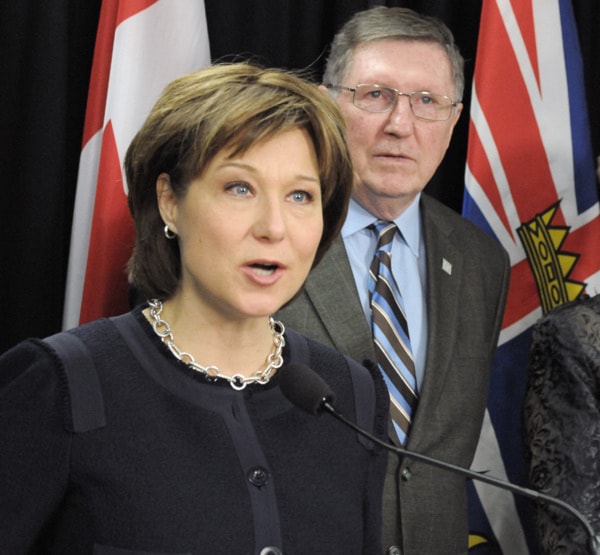Premier Christy Clark said her government has “notionally” found the cash to build a proposed $300-million hospital tower in Penticton, but has so far committed to spending just $2 million on a business case.
Clark on Wednesday paid her second visit in as many months to Penticton Regional Hospital and told reporters the Treasury Board had approved funds to develop a business case for the ambulatory care tower.
She said the study will take about a year to complete and include detailed cost estimates for the tower that her government will need to fully commit to funding its share, estimated at $160 million.
“When we do a business case, we do mean business,” Clark said.
The premier added the Liberal government has “notionally identified spending” in its 10-year capital plan to build the tower.
“We know the money is there. We know there is room in the budget,” Clark said.
The local hospital district already had $1.2 million set aside to complete the business case, and the premier was uncertain if that money would still be needed for the work. She was also uncertain why the $273.5-million prison near Oliver was announced in 2012 prior to its business case being completed.
Clark said the government has more experience building hospitals than it does prisons, and “different ministries will do it differently.”
Dr. Sarah Broder, one of the local physicians leading the campaign to get the tower built, didn’t buy that.
“I felt that the discussion about the jail got shunted there, because if you don’t have a lot of experience in building a jail, why would you commit to it on a concept? If you have more experience in building hospitals… then I would think the concept would be enough for you to jump forward,” Broder said.
The respirologist said she was otherwise “very happy that we’re seeing movement forward" on the tower, but added she won’t rest until construction actually begins.
“What I see in creating a business plan is that there is a lot of opportunity for the government to stall in this process. And unless I see a shovel in the ground, I’m not going to actually be feeling that this project has been fully committed,” Broder said.
“It’s an amazing thing that the government has found the money within the Treasury Board to make this process go forward, but I worry that with an election coming up that it will get stuck in a government shuffle that will stall this project yet again.”
The head of the regional hospital district said she was "very pleased" with Clark's announcement, but will keep the heat on government, regardless of which party forms it after the May election.
“If the Liberals have agreed to this and the NDP get in, we will not for one second let them off the hook. We will be very strong and very vocal this needs to be done,” said Janice Perrino, who chairs the board of the Okanagan Similkameen Regional Hospital District.
B.C. NDP health critic Mike Farnworth said his party, if elected, will make good on any Liberal commitments that have funding attached.
“If they’ve committed to a business plan, then we would definitely follow through on a business plan.”
However, Farnworth said the NDP would need to develop a “comprehensive plan” to prioritize spending on health infrastructure before it can commit to building the PRH tower.
He added that Clark's mention of "notional" capital funding doesn't amount to much.
“Notionally, I’d like to go to Mars, too," Farnworth said.
The hospital district has been saving for the past decade to fund its expected $120-million share of the tower and expects to have about $30 million in the bank by the end of the year. The local hospital foundation has also committed to raising $20 million.
When Clark visited PRH on Feb. 15, she promised to kick down those barriers that had stalled the project at the Ministry of Health. At the the time, she committed to expediting the business case, which she expected then would take six to eight months.
